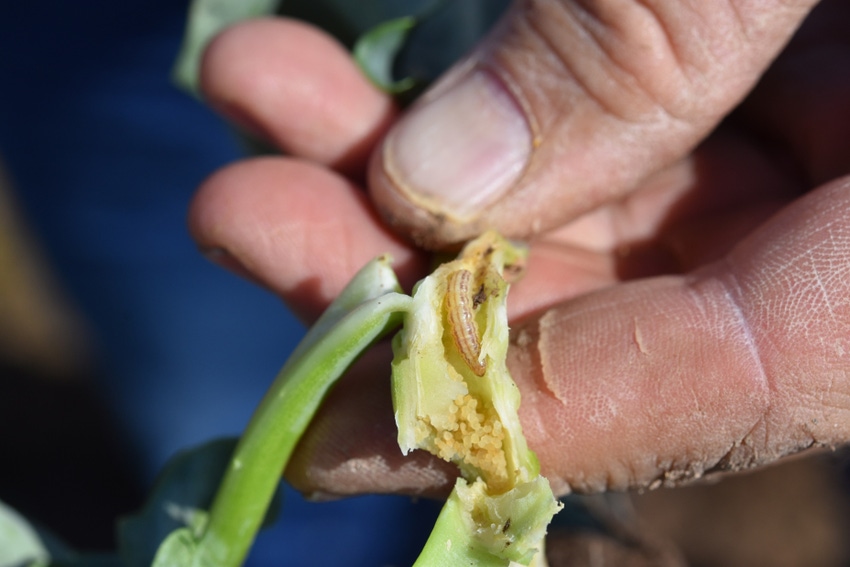
Desert brassica crops seem to have attracted a strange, new pest that could be problematic for growers this winter in the Yuma region.
University of Arizona Extension Entomologist John Palumbo writes in a recent newsletter that PCAs started calling him with sporadic reports of an unidentified lepidopterous pest in their cauliflower and direct-seeded broccoli. The heaviest hit crops appear to be organic cauliflower and cabbage.
Palumbo says the cabbage budworm, Hellula phidilealis, is a lepidopterous pest of tropical origin. It is a pest of major concern in the Caribbean, he said. The identity of the pest was confirmed by USDA APHIS officials.
The pest is not new to Arizona, Palumbo says. It was intercepted by inspectors at the San Luis, Arizona Port of Entry, and to date has not been seen in large numbers in the desert growing region. There have been no reports to date of the pest in the Imperial Valley or Coachella.
The cabbage budworm can be troublesome as it feeds on young plants, causing them to wilt and dry up. It is suspected that the insect may have migrated into the desert via the monsoon storms or remnants of Hurricane Kay, which blew through the desert region of southwestern Arizona and southeastern California in early September. He suspects the high humidity in the region this summer helped the insect survive.
Palumbo writes in a University of Arizona paper that the pest is rare in desert Cole crops, but this fall seems to be abundant and damaging to cauliflower, broccoli, cabbage, collards, and kale. “Anecdotal evidence suggests soil systemic insecticides such as Verimark transplant drench’s and Coragen at-plant, soil applications can effectively prevent crop damage during stand establishment,” he writes.
Desert farmers or PCAs with questions about the insect can contact their local Extension office.
About the Author(s)
You May Also Like






